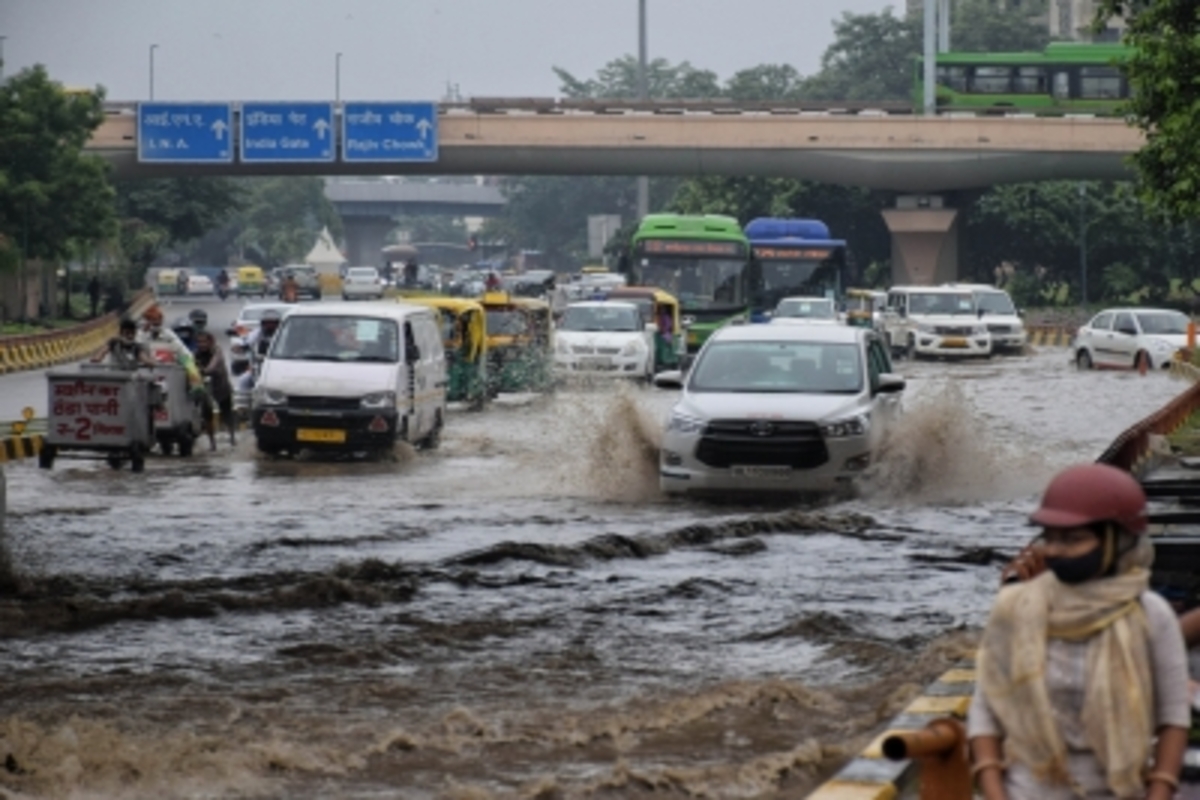Light rainfall graces Delhi-NCR, brings down temperature, improves AQI
Delhi-NCR woke up to light rainfall on Tuesday morning, with the India Meteorological Department (IMD) predicting that showers will continue throughout the day.
Despite the rain, Delhi’s Air Quality Index (AQI) has slipped to the ‘very poor’ category with PM 2.5 as the lead pollutant, System of Air Quality and Weather Forecasting And Research (SAFAR) reported.

Photo: IANS
Overnight heavy rainfall accompanied by thunderstorms lashed parts of Delhi-NCR on Monday which led to a decline in temperature and further deteriorated the air quality. Several parts of Delhi and its adjoining areas also witnessed waterlogging due to the incessant rainfall.
According to the India Meteorological Department (IMD), thunderstorms with moderate intensity rain with heavy intensity rain over isolated places would continue to occur over and adjoining areas of the national capital during the next two hours.
Advertisement
“Thunderstorm with moderate intensity rain with heavy intensity rain over isolated places would continue to occur over and adjoining areas of entire Delhi, Gurugram, Aurangabad, Palwal, Faridabad, Ballabhgarh, Panipat, Sohana (Haryana) during next two hours (issued at 4 a.m.),” the IMD tweeted.
Advertisement
Moderate to severe thunderstorms accompanied with lighting and squally winds (speed reaching occasionally 40-50 kmph) over Delhi during next 24 hours, said a statement issued by the IMD.
The day is supposed to be generally cloudy with light spells of rain.
The maximum temperature stands at 29 degrees Celsius and the minimum at 20 degrees Celsius, whereas the relative humidity has been pegged at 96 degrees Celsius.
Despite the rain, Delhi’s Air Quality Index (AQI) has slipped to the ‘very poor’ category with PM 2.5 as the lead pollutant, System of Air Quality and Weather Forecasting And Research (SAFAR) reported.
According to Central Pollution Control Board’s data, AQI of Delhi was 331 at 12 pm on Sunday, but the 24-hour average AQI improved later in the day. CPCB’s central control room data showed a 24-hour average PM 2.5 concentration for Delhi-NCR was 176.6 micrograms per cubic meter at 6 am but it reduced to 141.1 micrograms per cubic meter at 6 pm.
Similarly, 24-hour average PM10 in Delhi-NCR, which was 315.6micrograms per cubic meter at 6 am was recorded at 241.9 micrograms per cubic meter at 6 pm. The standard for PM10 and PM2.5 is 100 and 60 micrograms per cubic meter respectively.
“Favorable meteorological conditions lead to intrusion of stubble burning related air mass. With 1572 effective fire counts as per SAFAR harmonized methodology which includes data of two ISRO satellites, the stubble burning contribution in Delhi’s air has suddenly increased to 14 per cent,” SAFAR said.
It had also rained in the national capital and its adjoining area on Sunday morning as well. Fruit and vegetable wholesale markets in Ghazipur, Delhi, and parts of Gautam Buddh Nagar were seen waterlogged this morning.
On Sunday too, roads were inundated in water, causing vehicular traffic to move at a snail’s pace.
Delhi received 3 mm rainfall in the last 24 hours with the relative humidity being pegged at 90 per cent, the IMD said, attributing the untimely rains to western disturbance.
(With inputs from agencies)
Advertisement